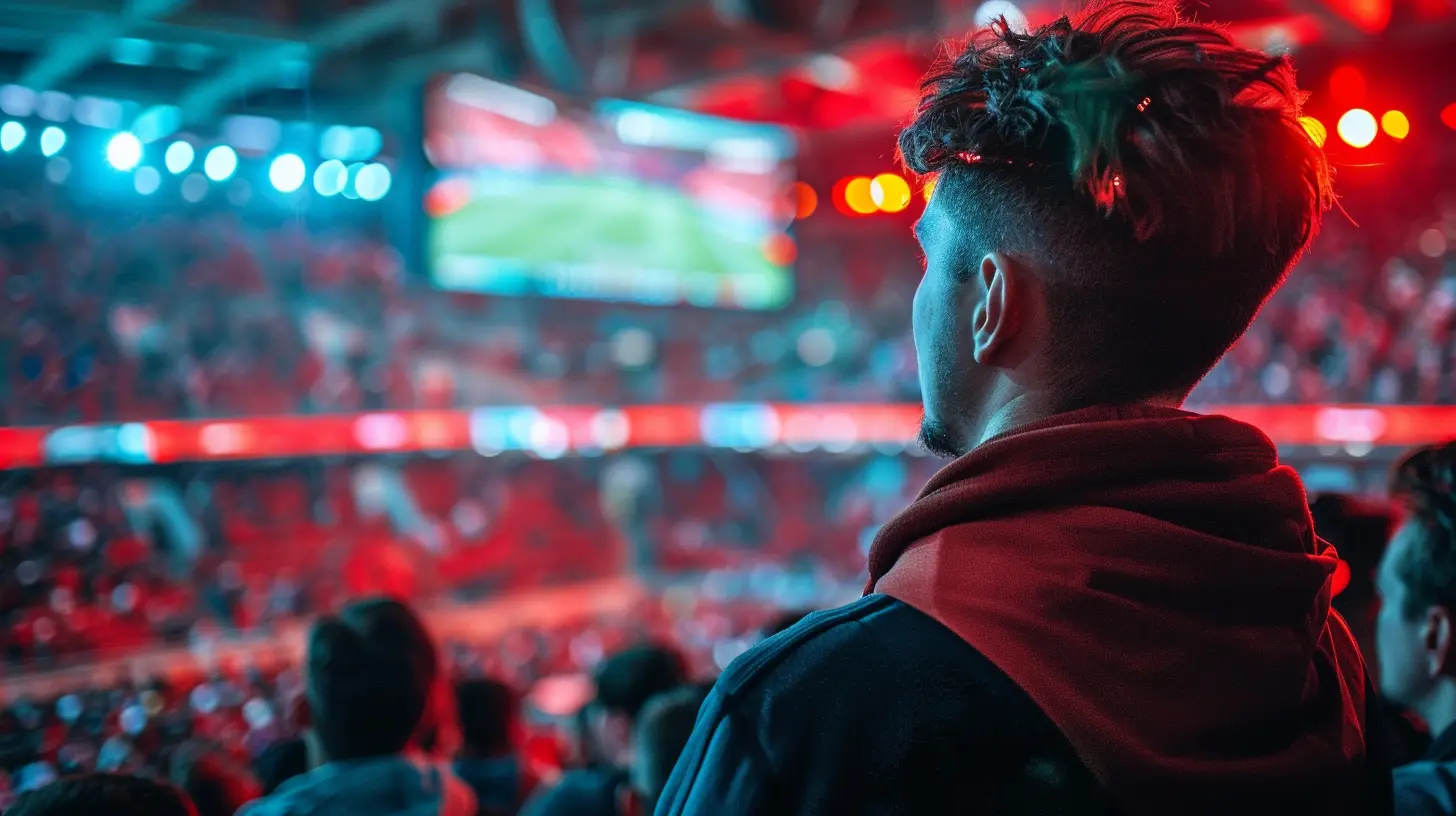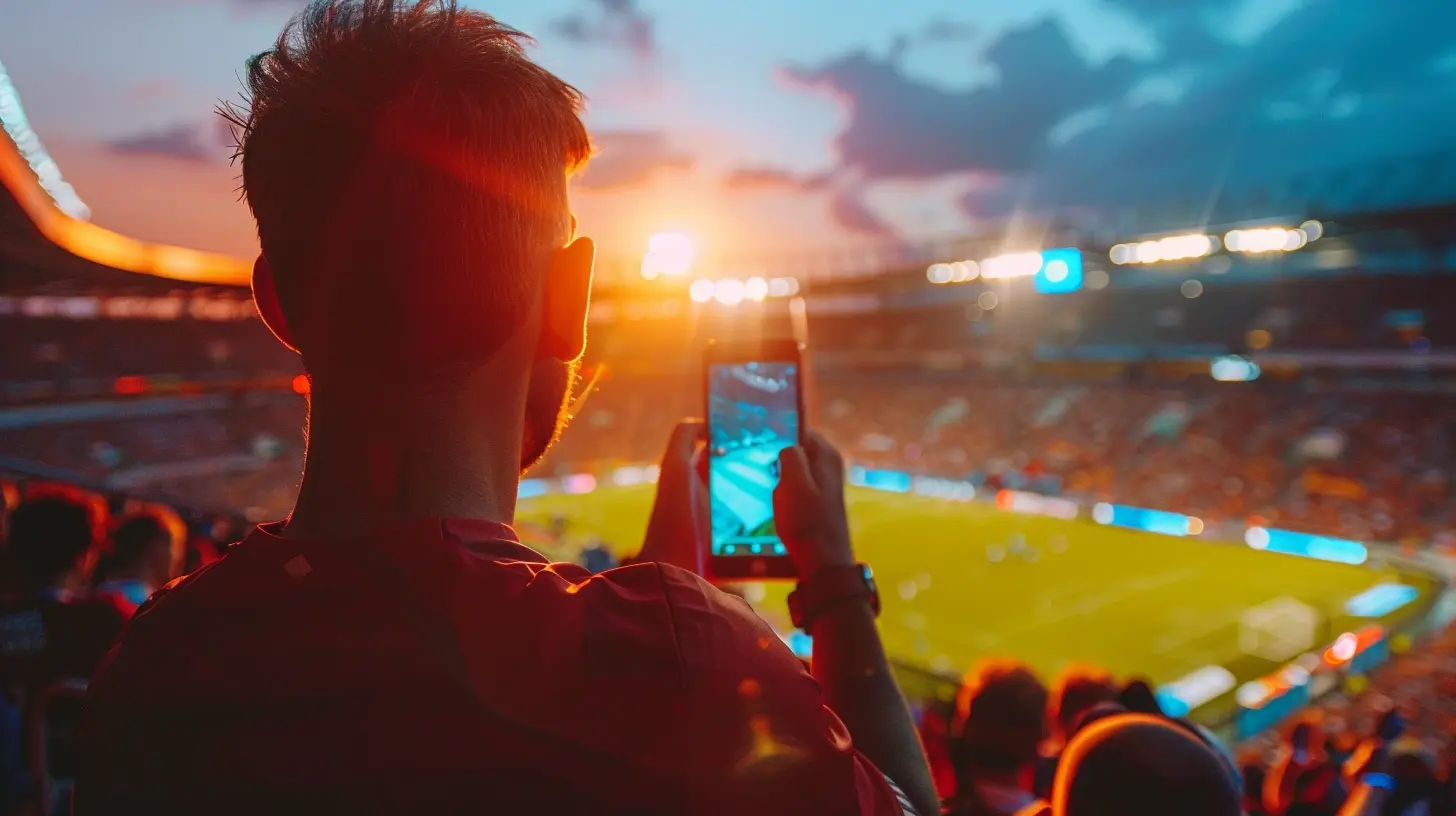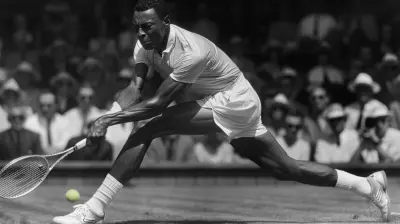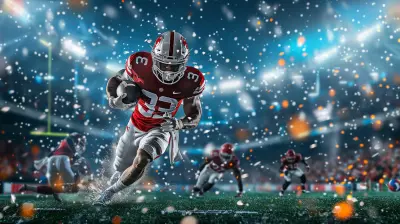The Role of Social Media in Shaping Modern Fan Culture
7 June 2025
In today's world, how we experience sports has drastically changed, and we owe much of that transformation to social media. Gone are the days when fans would wait to catch the latest sports news on TV or in the morning paper. Now, the action happens in real-time on platforms like Twitter, Instagram, Facebook, and TikTok. Social media has revolutionized the way fans interact with sports, athletes, and each other, creating a culture that is more connected, more vocal, and, let's face it, more intense than ever before.
But how exactly has social media impacted fan culture? And why has it become so influential in shaping how we celebrate, critique, and engage with the sports we love? In this article, we’re going to dive deep into the role of social media in shaping modern fan culture, from the way we consume sports content to how we connect with our favorite teams and players.

The Shift to Real-Time Engagement
The Era of Instant Access
Remember the days when you had to wait for the evening news to catch up on scores or highlights? That feels like ancient history, right? Social media has made sports a real-time experience, serving up live updates, play-by-play commentary, and instant reactions from fans and analysts alike.For fans, this means you no longer have to miss out on the action, even if you're not in front of a TV. Whether you're commuting, at work, or just too busy to sit down and watch the game, social platforms like Twitter and Instagram ensure you’re never out of the loop. Hashtags like #GameDay or #MondayNightFootball trend in real time, creating a global conversation that you're automatically a part of.
The Rise of Live Streaming
And it's not just about live updates. With platforms like Facebook Live, YouTube, and even Twitch, fans can now watch games, press conferences, and player Q&A sessions in real-time. This has democratized access to sports events. You no longer need an expensive cable subscription to catch your favorite team in action. All you need is an internet connection and your phone, and you're good to go.This instant engagement has significantly altered fan behavior. Fans are no longer passive consumers of sports content; they're active participants, sharing their opinions, reactions, and memes as the action unfolds.

Building a Global Fan Community
Breaking Down Geographic Barriers
One of the most powerful aspects of social media is its ability to connect people from all over the world. It doesn’t matter if you’re a die-hard Manchester United fan in New York or a Lakers fan in Tokyo — social media brings you closer to fellow supporters, no matter where they are.Take a look at Reddit’s sports communities, for example. Subreddits like r/NBA or r/Soccer boast millions of members from all corners of the globe. These online communities allow fans to discuss everything from game strategy to player stats, and even share memes that only true fans would understand.
This global connectivity has not only broadened the reach of fan culture but has also made it more inclusive. No longer are you confined to your local sports bar to find like-minded individuals. Now, you can engage with a worldwide fanbase that shares your passion — and that’s a game-changer.
Creating New Traditions and Rituals
With the rise of social media, fans have also developed new traditions and rituals that are exclusively digital. For instance, "Twitter reactions" after a major play or event have become a sport in themselves. After a buzzer-beating shot or last-second touchdown, Twitter explodes with memes, GIFs, and hot takes. These aren’t just fleeting moments; they're now an integral part of the sports experience.Even fan-made content, like TikTok videos celebrating a team’s victory or YouTube breakdowns of a game, has become part of the larger fan culture. Fans have transitioned from being consumers to creators, using social media as their platform to express their love (or frustration) for their teams.

Fan-Athlete Interaction: Closing the Gap
Athletes Are Now More Accessible Than Ever
Athletes are no longer distant, untouchable figures. With the advent of social media, the gap between fans and athletes has significantly narrowed. Platforms like Twitter and Instagram allow athletes to share behind-the-scenes moments from their personal lives, giving fans a glimpse into their world off the field.Take LeBron James, for example. His Twitter and Instagram accounts are filled with everything from workout videos to family moments, and even his thoughts on social issues. This transparency has humanized athletes in a way that was unimaginable twenty years ago. Fans now feel a deeper connection with their favorite players, who are no longer just names on a jersey but real people with real lives.
Direct Interaction: A Blessing and a Curse
But this increased accessibility is a double-edged sword. While it allows fans to feel closer to athletes, it also opens the door to negative interactions. Athletes are often subjected to online abuse and criticism, especially after a poor performance. The anonymity of the internet can sometimes bring out the worst in people, and athletes are not immune to this.However, many athletes have learned to use social media to their advantage. They engage with fans, respond to critiques, and even use their platform to promote causes they care about. In fact, social media has become so influential that some athletes have more followers than the teams they play for, giving them a platform that extends beyond the sport itself.

Fan Engagement: How Teams and Leagues Leverage Social Media
Personalized Content for Fans
Sports teams and leagues have quickly realized the power of social media and have adapted their strategies accordingly. Teams now use social media to engage directly with fans, offering personalized content that feels intimate and exclusive.For example, many teams run social media contests, asking fans to submit their own content—whether it’s artwork, photos, or videos—for a chance to be featured on the team’s official page. These kinds of fan engagement tactics make supporters feel like they’re part of the organization, further deepening their loyalty.
Behind-the-Scenes Access
Another way teams engage with fans is by offering behind-the-scenes access that fans would never get otherwise. Whether it's a locker room tour, a player’s pre-game routine, or a sneak peek at new merchandise, these small glimpses into the inner workings of a team make fans feel like insiders.This has become a major part of modern fan culture. Fans crave exclusivity, and social media has become the perfect vehicle to deliver that. It’s like getting a backstage pass to your favorite concert — only now, it’s your favorite sports team.
The Role of Memes and Viral Content
Memes: The New Language of Sports
It’s impossible to talk about social media’s impact on fan culture without mentioning memes. Memes have become the unofficial language of the internet, and sports are no exception. Whether it’s a hilarious reaction to a player’s mistake or a meme celebrating a team’s victory, these viral images and videos have become an integral part of the sports fan experience.In fact, many teams and even leagues have embraced the meme culture, often sharing fan-made memes on their official pages. It’s a way to engage with younger fans, who often communicate through humor and viral content. Memes add a layer of fun and relatability to the sports experience, making it even more enjoyable for fans.
The Power of Going Viral
And then there's the viral content — those moments that explode on social media and become part of sports history. Think of moments like the "Crying Jordan" meme or that iconic "double doink" missed field goal in the NFL playoffs. These moments transcend the game itself and become part of the broader pop culture, thanks to social media.Viral content can also shine a spotlight on lesser-known athletes or teams. A spectacular goal or dunk can go viral in a matter of minutes, bringing attention to athletes who might otherwise fly under the radar. In this way, social media has democratized the spotlight, giving everyone a chance to be seen.
The Future of Fan Culture in a Social Media World
Virtual Reality and Augmented Reality
Looking ahead, social media will likely continue to evolve and shape fan culture in new and exciting ways. One area to watch is the integration of virtual reality (VR) and augmented reality (AR). Imagine watching a game from the front row of a stadium, all from the comfort of your living room, thanks to VR technology. Or interacting with your favorite player via an AR filter on Instagram.These technologies could further blur the lines between fans and the sports they love, creating even more immersive and interactive experiences.
Social Media as a Fan Forum
Another trend to watch is the continued growth of fan-driven content. As platforms like TikTok and YouTube become more dominant, fans will continue to create their own narratives around sports events. User-generated content will play an even larger role in shaping fan culture, with social media serving as the forum for these discussions.Whether it's game analysis, predictions, or just good old-fashioned trash talk, fans will continue to leverage social media to make their voices heard.
Conclusion
Social media has undeniably transformed modern fan culture in ways we couldn’t have imagined just a few decades ago. It’s made sports more accessible, more interactive, and more global than ever before. Whether it's live updates, fan-athlete interactions, or viral memes, social media has created a new ecosystem where fans are not just spectators but active participants.As technology continues to evolve, so too will the role of social media in shaping fan culture. One thing is certain: whether you're tweeting your frustration after a missed shot or creating a viral meme about your team’s victory, social media has forever changed how we experience and engage with the sports we love.
all images in this post were generated using AI tools
Category:
Fan CultureAuthor:

Nelson Bryant
Discussion
rate this article
3 comments
Nicholas Mathews
Social media revolutionizes fan engagement.
June 20, 2025 at 11:26 AM

Nelson Bryant
Absolutely! Social media has transformed how fans interact with their favorite teams and celebrities, fostering real-time connections and creating a more immersive fan experience.
Payton Bailey
Social media connects fans, but divides communities.
June 14, 2025 at 4:08 AM

Nelson Bryant
Thank you for your insight! It's true that while social media fosters connections among fans, it can also amplify divisions within communities, highlighting the complex role it plays in shaping modern fan culture.
Kaitlin Bellamy
Social media is like a sports referee: sometimes it calls the right plays, but often it leaves us questioning, 'Did that really just happen?' Welcome to the circus of fandom!" 🏟️🤹♂️
June 11, 2025 at 10:56 AM

Nelson Bryant
Absolutely! Social media amplifies both the excitement and chaos of fandom, keeping us engaged while often challenging our perceptions of reality. It truly is a circus! 🎪



